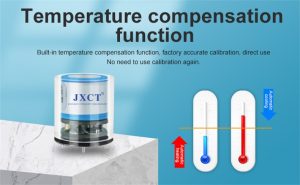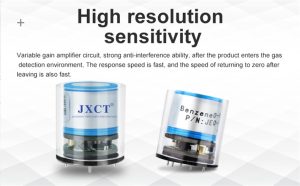Carbon monoxide (CO) is a colorless, odorless gas that is highly toxic to humans and animals when inhaled in high concentrations. It is produced as a byproduct of incomplete combustion of fossil fuels, such as gasoline, natural gas, and coal. Due to its hazardous nature, the monitoring and detection of carbon monoxide are crucial for ensuring safety in various environments. Carbon monoxide gas sensors play a vital role in detecting and measuring the levels of this deadly gas. This article will discuss the functions, principles, and applications of carbon monoxide gas sensors.

The main function of a carbon monoxide gas sensor is to detect the presence of CO gas and provide an accurate measurement of its concentration in the air. This information is critical for early warning systems, enabling prompt action to be taken to protect human health and safety. Carbon monoxide sensors are widely used in residential, commercial, and industrial settings to monitor potentially hazardous environments where carbon monoxide can accumulate.
The principle behind the operation of a carbon monoxide gas sensor is based on electrochemical detection. The sensor typically consists of an electrode assembly with a sensing electrode, reference electrode, and an electrolyte. When carbon monoxide gas comes into contact with the sensing electrode, a chemical reaction occurs, generating an electric current proportional to the concentration of CO. This current is then measured and converted into a digital or analog output that provides the CO concentration reading.
To ensure accurate measurements, it is essential to calibrate carbon monoxide gas sensors regularly. Calibration involves exposing the sensor to a known concentration of carbon monoxide gas and adjusting the sensor's response accordingly. Regular calibration helps maintain the accuracy and reliability of the sensor over time.
Carbon monoxide gas sensors have a wide range of applications in various industries and settings. In residential areas, they are commonly used in homes, apartments, and hotels to detect the presence of carbon monoxide from malfunctioning gas appliances, heating systems, or vehicle exhaust. Early detection of carbon monoxide allows occupants to evacuate and seek medical attention before being exposed to dangerous levels of the gas.
In commercial and industrial settings, carbon monoxide gas sensors are used in factories, warehouses, parking garages, and tunnels to monitor the air quality and ensure a safe working environment. They are particularly important in industries such as mining, construction, and manufacturing, where the use of combustion equipment and the potential for carbon monoxide release are high. Gas sensors can be integrated into building management systems or alarm systems to provide real-time monitoring and instant alerts in case of elevated CO levels.
Carbon monoxide gas sensors also find applications in automotive systems to monitor exhaust emissions and ensure compliance with environmental regulations. They are an integral part of carbon monoxide detectors installed in vehicles to alert drivers when CO levels reach dangerous levels. This helps prevent accidents and protect the health of passengers and drivers.

In conclusion, carbon monoxide gas sensors play a crucial role in detecting and measuring carbon monoxide levels, ensuring safety in various environments. Their ability to accurately detect this deadly gas helps protect human health and prevent potential fatalities. With their wide range of applications in residential, commercial, industrial, and automotive settings, carbon monoxide gas sensors contribute to creating safer and healthier environments for everyone. Regular calibration and maintenance of these sensors are essential to ensure their continued accuracy and reliability.
 : +86 155 8830 2704
: +86 155 8830 2704 : jxdziot@gmail.com
: jxdziot@gmail.com
